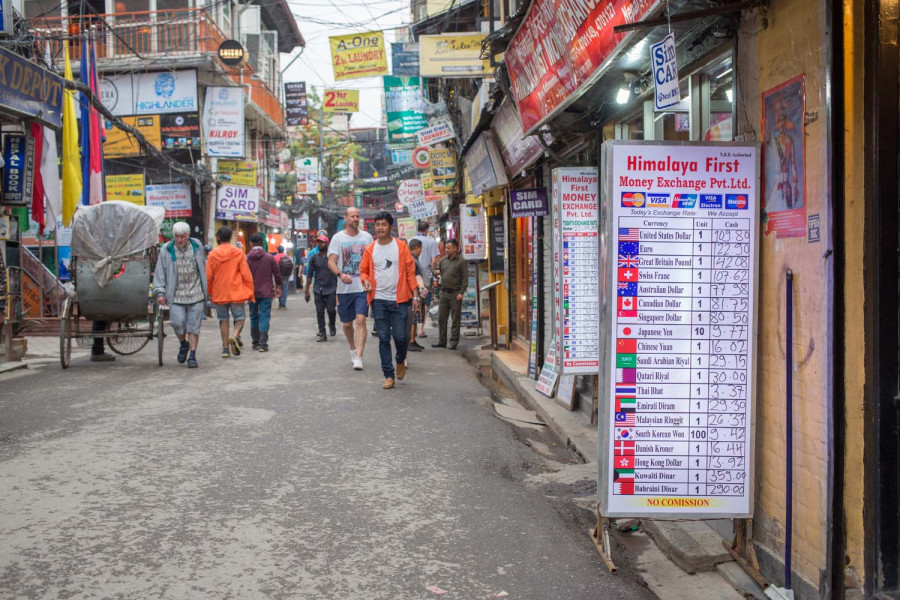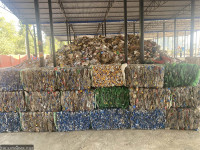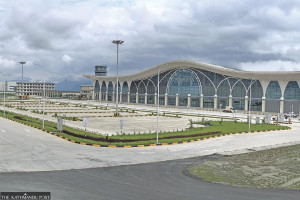Money
Nepali rupee sinks to historic low against US dollar
Experts warn of rising inflation in Nepal, where most imports and services are priced in dollars.
Post Report
The Nepali rupee has hit an all-time low, with Nepal’s central bank fixing the exchange rate at Rs140.43 per US dollar on Friday. The rupee depreciated by 0.18 paisa against the dollar in a single day, primarily due to the weakening of the Indian rupee, to which it is pegged.
The depreciation of the Indian currency directly impacts the Nepali rupee, causing it to weaken.
Nepal follows a pegged exchange rate system with the Indian rupee, meaning any fluctuation in the Indian currency also affects Nepal’s exchange rate.
A year ago, the Nepali currency traded at around Rs133 per US dollar. The US dollar began strengthening after the Russia-Ukraine war in early 2022, contributing to global economic shifts.
Experts warn that Nepal, an import-driven economy, may face a sharp rise in inflation due to the dollar's strength, as most goods and services are quoted in dollar terms.
Commodities such as edible oil, petroleum fuel, and food are priced in dollars globally, making them more expensive for Nepali consumers.
“As food expenditures constitute a large share of household consumption, the continued weakening of the rupee makes essential goods costlier,” said economist Puskar Bajracharya.
According to the Nepal Rastra Bank, year-on-year consumer price inflation stood at 5.41 percent in mid-January, compared to 5.26 percent a year ago. A robust US economy, high bond yields, and market volatility have driven the dollar’s strength.
The rise of the US dollar has both advantages and disadvantages for Nepal. While it makes imports more expensive, it also encourages exports and boosts remittance inflows.
According to Nepal Rastra Bank, Nepal’s exports increased by 31.8 percent to Rs98.79 billion in the fiscal year’s first half, compared to the same period a year ago. Meanwhile, merchandise imports rose by 7.1 percent to Rs822.37 billion.
Remittance inflows increased by 4.1 percent to Rs763.08 billion in the same period, as a stronger dollar allows Nepalis working abroad to send more money home.
The depreciation of the rupee means the government faces higher costs in repaying external debts as loans taken in foreign currencies become more expensive.
Following the 2015 earthquake, Nepal’s debt burden surged due to large-scale infrastructure reconstruction efforts.
Being an import-based economy, Nepal is particularly vulnerable to currency fluctuations.
“A strong dollar will push up inflation on essential goods and services, particularly petroleum products, Nepal’s biggest import,” said Bajracharya. The rising cost of chemical fertilisers is another major concern for Nepal’s agriculture sector.
Economists suggest that the US dollar will likely remain strong for some time, given the current global economic trends. However, extreme fluctuations could have long-term implications on international trade and financial stability.
Before the Russia-Ukraine war, the US dollar was trading at around Rs117. Since then, it has frequently risen, and the trend may persist before stabilising as the global economy adjusts.
Additionally, a stronger dollar raises the price of gold in the local market, a trend often observed in times of currency volatility.
Nepal follows a dual exchange rate system, with the rupee pegged to the Indian rupee at 1.60, unchanged since 1960.
The exchange rate is market-determined for other convertible currencies, fluctuating with global financial trends.
While a strong dollar discourages imports by making them more expensive, it also boosts remittance inflows and enhances export competitiveness.
The overall economic impact depends on how well Nepal balances these opposing forces in the coming months, said Bajracharya.




 11.12°C Kathmandu
11.12°C Kathmandu














